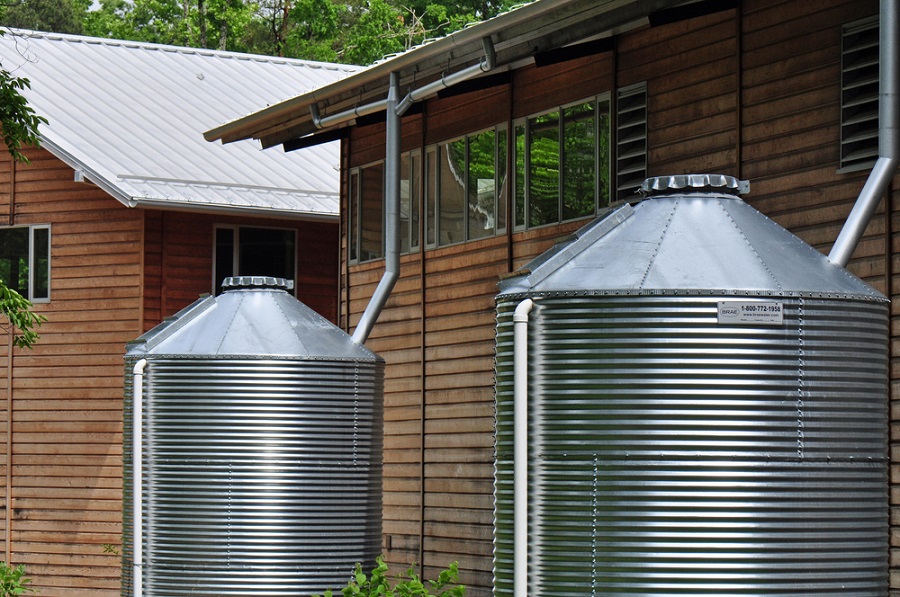Last updated on
Want to save water and be more efficient about its use? Do you know how? In this article, we’re going to give you 3 big steps to become water-wise at home.
You’ve heard that you need to turn off your faucets, take shorter showers and flush your toilet less; you know that you should only do laundry when you can fill the drum, and you know that loading the dishwasher properly is important. Whether or not you have gone out of your way to being water-wise, you probably know these tips for conserving water around your home.
However, these are merely small, everyday tricks for saving a gallon here and there. If you want to make a major difference in your water usage, you need to take bigger steps toward becoming water-wise — and here’s how.
What's Inside
Catch Rainwater

Collecting fresh water from lakes and streams, then channeling that water into urban and suburban areas is an expensive and destructive process. Fortunately, there is a way to reduce your dependence on water from your city: rainwater harvesting.
On average, the contiguous U.S. receive more than 30 inches of rainfall a year, with some regions receiving well over 100 inches — and Hawaii gaining an unbelievable average of 460 inches of rain every year. Over an acre of land, one inch of rainfall equates to over 27,154 gallons of water, which means by catching rainfall, you could save millions of gallons of water every year.
Catching rainwater isn’t particularly difficult and certainly isn’t expensive. The simplest method is placing a water tank beneath the downspout that collects water from gutters lining your roof. If you have a large property, you might build a “dry” or “wet” rainwater catchment system, which involves running several collection pipes to a large water tank.
Rainwater is pure and distilled, perhaps even cleaner than the water from your taps — but only when it is falling from the sky. As it falls, rainwater might catch dust or even smog, and as it runs off your roof, it could collect other particles that you might not want to drink or bathe in. Generally, rainwater is best for outdoor use, like watering your lawn. Only if your rainwater is deemed potable should you consider drinking it, cooking with it, or using it to clean your home?
Utilize a Graywater System

Water isn’t like a paper napkin — “used” water doesn’t become completely and utterly useless. In fact, much of the “used” water around your home could be used again on your property without negative consequences. This is the principle behind graywater systems, which take “used” water from some of your plumbing and hold onto it for later application.
To understand greywater systems, you should first understand the classifications of water around your home. First, you have white water or clean water. This is what comes straight from your tap, hopefully, free from any toxins or dangerous chemicals. White water’s direct opposite is black water, which is highly contaminated water, especially that which has come into contact with fecal matter. Toilet water, as well as water that has touched the ground outside, is considered black. Finally, gray water is in between white and black; it might have some impurities, like soap particles, and this isn’t potable, but generally, it is safe for reuse.
Generally, graywater systems capture water from relatively clean plumbing, like sinks, showers, dishwashers and laundry machines, and distributes it to plumbing that doesn’t need perfectly pure water, typically landscaping. You can set up a rudimentary graywater system by allowing your clothing washer to drain into your lawn or garden. If you want a more complex system — one that collects graywater from various places around your home and schedules landscaping watering — you might need professional installation.
Plumbing Maintenance

Finally, the last major way to keep your water bill low and your sustainability high are to keep your home’s plumbing well-maintained. Though it isn’t a drastic and noticeable change to how your home uses water, it does guarantee that you aren’t wasting water without realizing it. After all, a dripping faucet could waste more than 4,000 gallons of water per year, and a leaking pipe could flood your home, damaging much more than your monthly utility expenses.
Here are a few tips for maintaining your plumbing to remain water wise:
- Look for leaks. Actively check your faucets for dripping, and schedule checkups on the walls, ceilings, and floors where pipes run, so you can spot water damage early.
- Unclog drains. Slow-running drains are a danger to your pipes, so you should clear them ASAP with green solutions like vinegar and hot water.
- Fix running toilets. Typically, a running toilet only needs you to replace a rubber seal inside the tank, but allowing it to run could waste 26 gallons of water per day.
- Don’t abuse your drains. Large chunks of food, wads of paper, hair, and other bits and bobs can get lodged in your pipes and cause slow draining if not cracks. The best advice is to avoid putting anything unnecessary into your plumbing.
Being water-wise can be as small as turning the shower off while you shave, but it can be as big as relying on your city’s water system less and your property’s existing water more. By investing in your home plumbing, you can save yourself the headache of a high water bill and the heartache of unsustainable water use.




